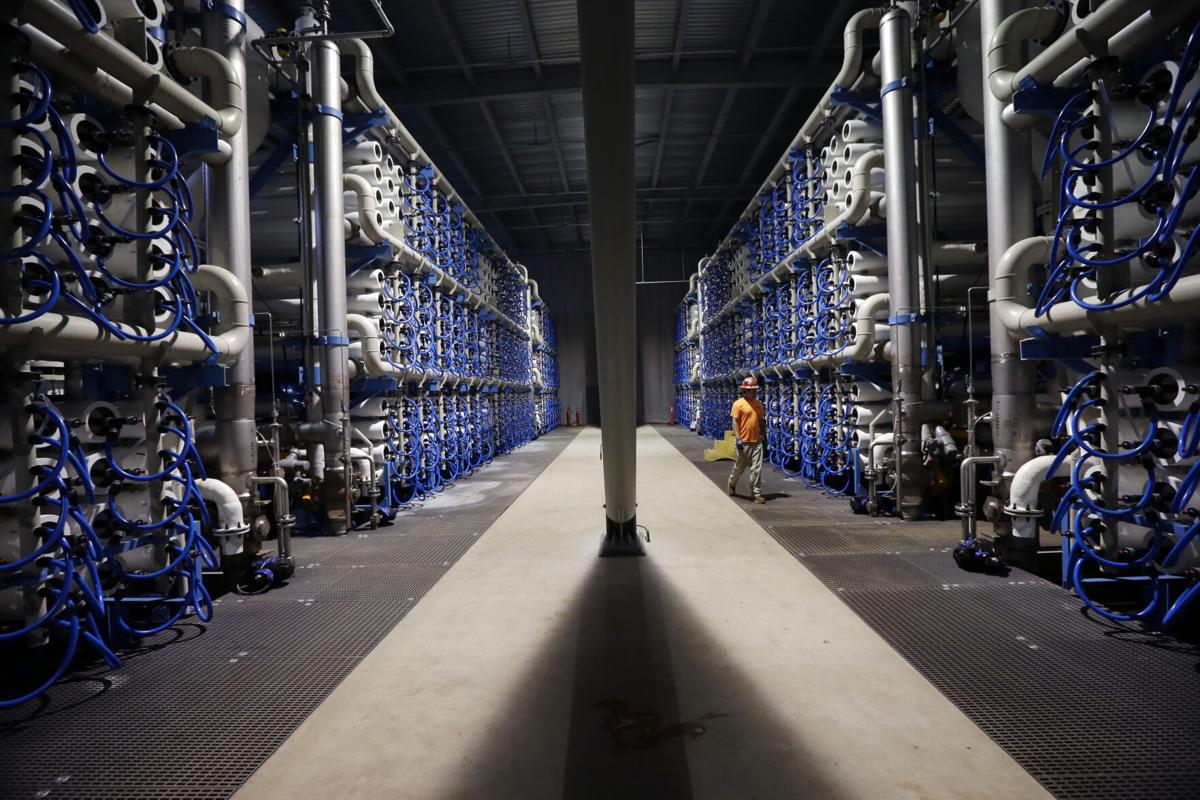PHOENIX — Gov. Doug Ducey signed legislation Wednesday to provide $1.2 billion to fund massively ambitious projects to find new water for Arizona, and smaller ones to conserve what the state already has.
He is particularly excited about the idea of Arizona being involved in constructing a plant to desalinate water, likely from the Sea of Cortez in Sonora, providing fresh water that could be used for not only domestic use but also for the agriculture industry, which consumes 70% of the water Arizona now uses.
“We are in the second decade of the worst drought in recorded history,’’ Ducey said. “We continue to experience shortages on the Colorado River. And the forecasts are not getting better.’’
The new law finances Arizona’s efforts to come up with a new source of water from outside the state.
In particular, that means “the largest desalination project in history, anywhere around the globe,” Ducey said.
That will cost more money than the legislation provides. But House Speaker Rusty Bowers, R-Mesa, said the state won’t be picking up the entire tab.
“There are already groups, businesses that want to partner with the state,’’ Bowers said, calling what’s in the legislation “leveraging money’’ to make the state “a partner in larger operations,’’ including with Mexico.
There are also other options for the use of the money, Bowers said, such as finding a way to pipe floodwaters in the Midwest to places where water is needed, like Arizona, though there are no details on how that would work legally or physically.
Water to sell to other states
That leaves the question of how much more Arizonans may have to pay for water.
The cost of desalinated water will be in the neighborhood of $2,500 an acre-foot, which is about 326,000 gallons, according to Tom Buschatzke, director of the Arizona Department of Water Resources. That’s the amount of water that, depending on the community, can serve about three homes for a year.
Any new costs would come on top of what’s charged now for delivery.
Ducey, however, said he doesn’t believe Arizona water users will be in for sticker shock.
“We’re going to be the big boy of the lower basin states. Right now we’re the little brother,’’ Ducey told KTAR on Wednesday, noting that Arizona has the lowest priority to take water out of the Colorado River.
“We’re going to have water to sell to other states to supplement and bring our costs down,” he said.
Conservation steps
All that, however, is years off. So the legislation also includes shorter-term answers — and $200 million specifically set aside for them. Many of those involve doing more with less.
“We have funding to address best management practices in our counties and our cities,’’ said Rep. Gail Griffin, R-Hereford. Those include recharging rainwater, using more efficient plumbing fixtures and changing landscape practices to convert to more drought-resistant plants.
Another is replacing grass with artificial turf. “I did that about eight years ago and it still looks great,’’ Griffin said. “It’s green, the dogs love it. And I haven’t used any water on it.’’
There’s also potable water reuse — something that eventually could lead to what has been dubbed “toilet-to-tap,’’ where effluent is treated to the point that it can go immediately back into the drinking water supply.
“It’s not just one project,’’ Griffin said. “It’s all of the above.’’
Climate change issue
But at Wednesday’s press conference where the Republican governor signed the legislation, only the Democrats present mentioned the controversial issue of why Arizona is hotter and drier.
“Our state is confronted with the reality of climate change,’’ said Senate Minority Leader Rebecca Rios, D-Phoenix.
She said that comes in combination with the fact that the Colorado River has been “over-allocated.’’
The agreement on the amount of water each state was entitled to take was set half a century ago, but the actual flow of the river now is far below where it was then.
That already has forced mandatory cutbacks, with future reductions possible to keep Lake Mead from becoming a “dead pool’’ with no water flowing over the Hoover Dam.
The rapid decline was noted by the governor, who pointed out he was signing the new legislation in the same location as he signed the 2019 “drought contingency plan.’’
That move provided cash to help farmers, who would be getting less water from the river, to instead construct new wells and water delivery systems. It also paid money to tribes, who have higher priority claims to the river water, to reduce their own use.
The plan was supposed to take care of water shortages through 2026, as there were some hopes the drought would abate.
But that hasn’t happened. And Ducey said that the state’s current financial surplus provided the opportunity to act now to shore up supplies.





